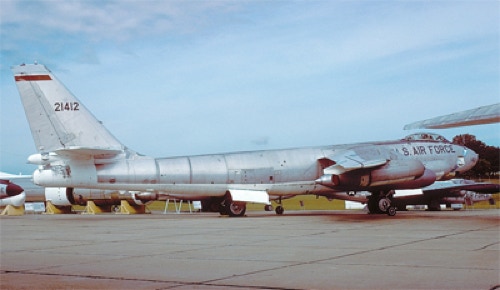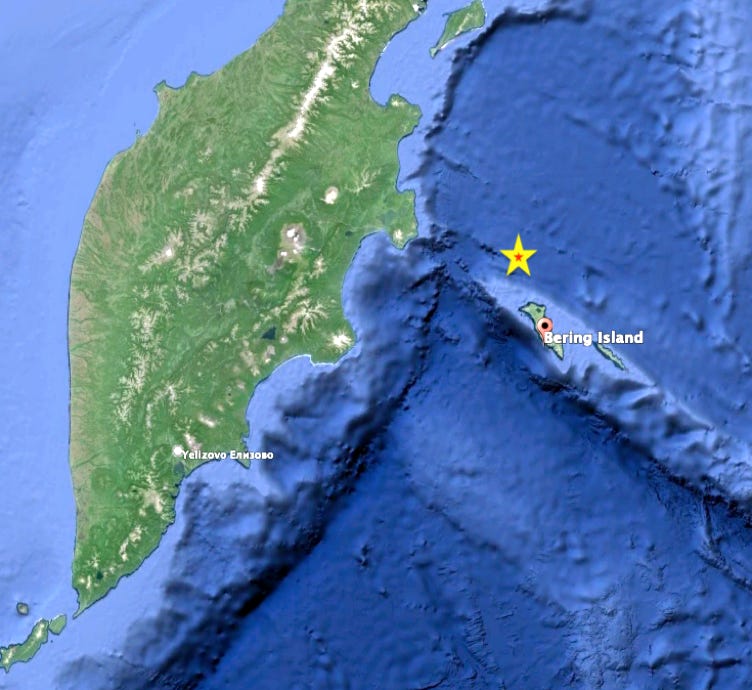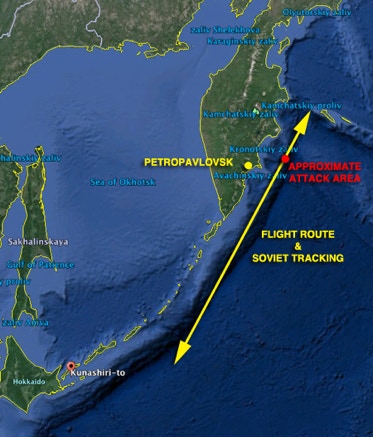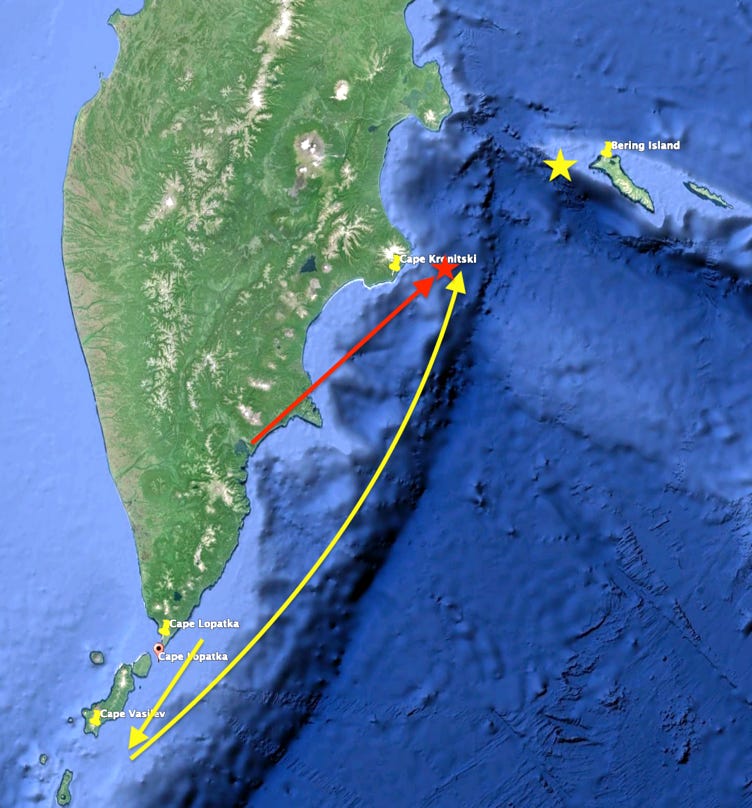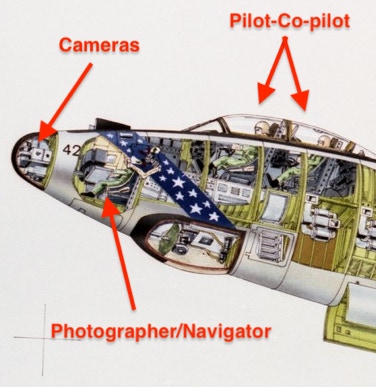DUTY, HONOR, COURAGE, RESILIANCE
Talking Proud: Service & Sacrifice
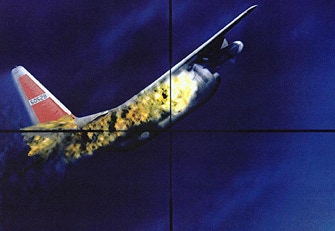
Airborne Peripheral Reconnaissance, Cold War Losses
“Silent Sacrifices”
USAF RB-47 , off-shore Kamchatka Peninsula, April 18, 1955
Two Soviet MiG-15s shot down a SAC RB-47E photo reconnaissance aircraft over the Pacific Ocean east of the Kamchatka Peninsula on April 18, 1955. The aircraft was assigned to the 4th SRS, 26th Reconnaissance Wing, Eielson AFB, Alaska.
This was a mysterious event, despite the forthright opening statement above. The US was not able to prove the aircraft was shot down but could assert so based only on circumstantial evidence and information provided by Russia many years later.
The Aviation Safety Network underscores the initial problem: "Information is only available from news, social media or unofficial sources.”
The National Security Agency’s (NSA) report, “Maybe you had to be there” said,
“The story of the ill-fated flight of a USAF RB-47 on 18 April 1955 is essentially one of a reconnaissance aircraft that went missing. It took off and never returned.
“In light of available communications intelligence (COMINT) information, it is not possible to ascribe the loss of the missing RB-47 to Soviet action.”
The US confirmed she was shot down after Russian President Yeltsin’s government provided the US-Russian Joint Commission on POW/MIAs with declassified documents revealing the details in 1992.
I show some maps here that reflect positional information from the reports described below. My maps are guesstimates based on the reports.
The U.S. side of the U.S.-Russia Joint Commission on POW/MIA Affairs issued a “Comprehensive Report of the US Side of the U.S.-Russia Joint Commission on POW/MIAs on June 17, 1996.” This report said,
“The US position prior to the establishment of the Joint Commission was that this plane had been on a routine weather reconnaissance flight when it was attacked by Soviet fighters and shot down over international waters. When the case was presented to the Russian side of the Commission in 1992, the US side acknowledged that the plane had been on an intelligence-gathering mission.
“The crash site was reported by Soviet fishermen aboard the boat ‘Komandor.’ They noted an explosion 13 kilometers west of the settlement of Nikol'skoye on Bering Island, approximately 55°, 50 minutes North, 165° 50 minutes East. (N.B. These coordinates place the explosion north of Bering Island, as shown here).
“Soviet intelligence also reported extensively on the American search and rescue (SAR) efforts. The SAR started on 19 April (the dates used by the Soviets in this analysis are one day ahead of ours, owing to the proximity of the International Date Line) and lasted four days using over 20 planes in an extensive SAR effort. However, the Soviet conclusion was that ‘from the nature of the search, one can suppose that the Americans do not know the place, cause, and time of the plane's destruction.’ That is, the plane did not go down where the Americans thought it went down, and so they searched in the wrong place.
“Archival data makes it clear that the RB-47 was shot down by Soviet fighters over international waters on 18 April 1955.”
The aircraft flew its mission for about 7.5 hours. Its scheduled flight route was to fly southwest along the Kamchatka Peninsula and Kurile Island chain to 100 miles northeast of Hokkaido, Japan, and then return. Eielson AFB reported that she was overdue by 12.5 hours into the mission with 13 hours of fuel.
There were three souls aboard, all unaccounted for: the pilot, co-pilot, and radar observer, all seated in tandem, one behind the other. The crew included Capt. Lacie C. Neighbors, aircraft commander; Capt. Robert N. Brooks, navigator and radar observer; and Capt. Richard E. Watkins, Jr., co-pilot.
The Defense POW/MIA Accounting Agency said,
“U.S. investigators interviewed witnesses who reported that the aircraft exploded mid-air before crashing into the Bering Sea, west of Bering Island. No parachutes were seen to exit the aircraft before it went down. Soviet search and rescue efforts conducted immediately following the incident located parts of the lost RB-47E but found no evidence of the missing crew. Further search attempts have been unsuccessful in locating the crew from the Stratojet.”
NSA said the Soviets tracked her, identifying her as a high-performance suspicious aircraft for about 41 minutes before the attack. The Soviets also tracked Soviet fighters on patrol for about an hour and 18 minutes before and 30 minutes after the attack. The problem was that US signals intelligence (SIGINT) sources could not confirm the aircraft had been attacked. No intercepts were made indicating the RB-47E was a border violator or a hostile. SIGINT intercepts reflected the aircraft over international waters. SIGINT identified fighters from the 10th Air Army Regiment T5302B at Petropavlovsk/Khutor airfield scrambling (red arrow) about 30 minutes before the incident. But there was no SIGINT to indicate talk of a shootdown.
Soviet documents showed they began tracking the RB-47E near Cape Lopatka at the southern end of the Kamchatka Peninsula. The Soviets tracked her to a point about 43 miles southeast of Cape Vasiliev. The Russians acknowledged it had not violated territorial waters, but the local air defense command center on Kamchatka scrambled two MiG-15s to intercept it. They did so about 32 miles east of Cape Kronitski at 39,000 ft. (red star).
The Soviets claimed the RB-47 fired on the MiGs, and the MiGs returned the fire. The Soviet MiG pilots were identified as Korotkov and Sazhin. Shortly after that, the RB-47E vanished from Soviet radars. Soviet fisherman in the area saw an explosion and black smoke 13 km west of Nikol’skoe (yellow star) on the Soviet-owned Bering Island, which would have put her in Soviet territorial waters.
A Russian website reported on the the RB-47 shootdown,
“A major success fell to the MiGs on April 18, 1955. On this day, in the area of the Commander Islands, air defense systems discovered an American RB-47. The duty pair of MiG-15s, consisting of Captain Korotkov and Senior Lieutenant Sazhin, rose to intercept. They managed to shoot down a scout (RB-47), and Korotkov had to use up almost all the ammunition for this.”
The Americans did not file a protest because they said they lacked hard evidence of a shootdown. The Soviets said they intercepted no radio transmissions from the RB-47E crew, the American search efforts were conducted in the wrong location, and American ships in the area did not see the shootdown. As a result, the Soviets concluded the Americans had no idea what happened to their aircraft, and therefore, they made no statement either.
The Soviets felt they understood the American search effort completely, which reflected how well the Soviet SIGINT system was operating at the time. The Soviets did find debris from the RB-47 that had washed ashore on Bering Island.
At the time, the B-47 was our first swept-winged bomber, a radical design that demanded professional airmanship. She had six engines and flew something like a fighter. She experienced more than her share of accidents, usually attributable to pilot error. That said, the aircraft was not forgiving. The B-52 replaced her.
Joe Baugher’s website described how the RB-47E was equipped,
“The RB-47E was a dedicated photographic reconnaissance version of the B-47E … The nose of the RB-47E was 34 inches longer so that it could house a special air-conditioned compartment for cameras and other sensitive equipment. Eleven cameras could be carried, along with ten photoflash bombs and supplementary photoflash cartridges for night photography … The crew was still three, but the bombardier became the photographer/navigator.”
The FAS Intelligence Resource Program said, “The RB-47E went on to perform some of the most sensitive reconnaissance missions of the Cold War.” This was, in part, because the RB-47s frequently overflew Soviet territory.
The Air Vectors website commented on how the RB-47 was frequently used,
“The RB-47s were the only B-47 variants to see combat. They flew from airfields scattered around the globe that ringed the USSR, with the RB-47s often probing Soviet airspace. The Soviets did not like the intrusions and sometimes reacted violently. Attacks on the RB-47s were kept secret for a long time; the families of aircrew killed in such incidents were simply told they had died in a crash. The facts only emerged in the 1990s.
“An RB-47 flying out of Alaska was scouting out the Kamchatka Peninsula on 17 April 1955 when it was attacked by Soviet MiG-15s in international airspace. The RB-47 and its crew disappeared. They were presumably lost in the shoot-down -- but rumors circulated that some or all were captured, run through the mill by Soviet interrogators, and then executed. That story was never confirmed.
“The shoot-down did not make the USAF more cautious. Between 21 March and 10 May 1956, 16 RB-47Es and 5 RB-47Hs operating from Thule, Greenland, performed overflights of the length of Siberia 156 times under Project HOME RUN, with six RB-47Es participating in the final flight of the series. The Soviets never caught the intruders; they filed an angry complaint with the US government, which blandly replied the overflights were accidental, due to ‘navigational difficulties.’”
The USAF took delivery of 255 RB-47Es. Some remained in service until 1967.
__________
Click to zoom graphic-photo
Table of Contents
- Introduction
- USN PB4Y2, Baltic Sea, April 8, 1950
- USN P2V Neptune, Sea of Japan, November 6, 1951
- USAF RB-29, June 13, Sea of Japan, June 13, 1952
- USAF RB-29, Sea of Japan, October 7, 1952
- USAF RB-50, Sea of Japan, July 29, 1953
- USN P2V, Sea of Japan, September 4, 1954
- USAF RB-29A , Sea of Japan, November 7, 1954
- USAF RB-47 , off-shore Kamchatka Peninsula, April 18, 1955
- USAF RB-50G , Sea of Japan, September 10, 1956
- USAF C-130A , Soviet Armenia, September 2, 1958
- USAF RB-47H , Barents Sea, July 1, 1960
- USAF RB-66C , East Germany, March 10, 1964
